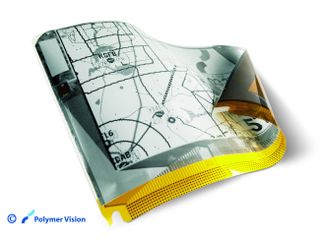Flexible memory chips made with sunscreen
Answers burning questions about future of storage

The future of electronics looks floppier than ever, thanks to the invention of flexible electronic memory circuits by researchers at America's National Institute of Standards and Technology (NIST).
Scientists took polymer sheets (like the transparencies use on overhead projectors) and deposited a thin film of titanium dioxide, an ingredient in sunscreen, on their surfaces.
The material was spun in liquid form and allowed to set. Then, by adding electrical contacts, the team created a flexible memory switch.
Chip off the old blob
The new memory chip operates on less than 10 volts, maintains its memory without power, and still functions after being flexed more than 4,000 times.
Electronic components that can flex without breaking are coveted by manufacturers for many reasons - and not just because people tend to drop their mobile phones. They enable small medical sensors that can be worn on the skin to monitor vital signs such as heart rate or blood sugar, and are essential for realising concepts such as foldable electronic newspapers.
NIST researcher Nadine Gergel-Hackett says, "Because the active component of our device can be fabricated from a liquid, there is the potential that in the future we can print the entire memory device as simply and inexpensively as we now print a slide on an overhead transparency."
Get daily insight, inspiration and deals in your inbox
Get the hottest deals available in your inbox plus news, reviews, opinion, analysis and more from the TechRadar team.
The new chips may also be able to function memristors, the elusive fourth fundamental circuit element (along with capacitors, resistors and inductors) that changes its resistance depending on the current running through it.
Most Popular


